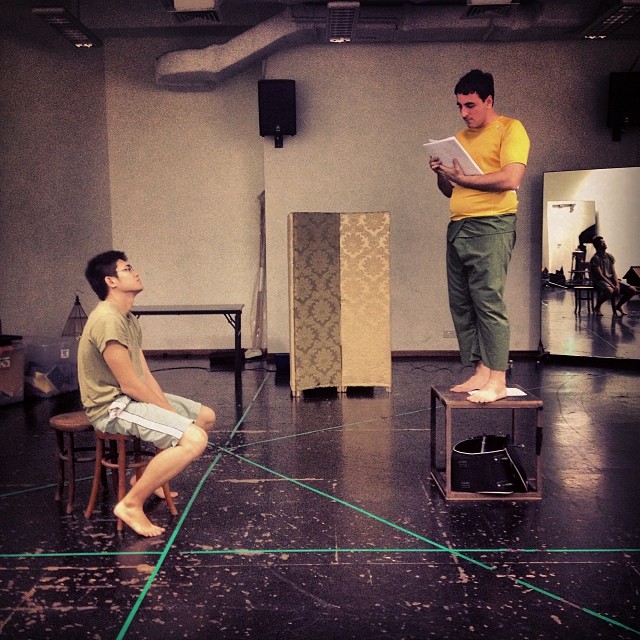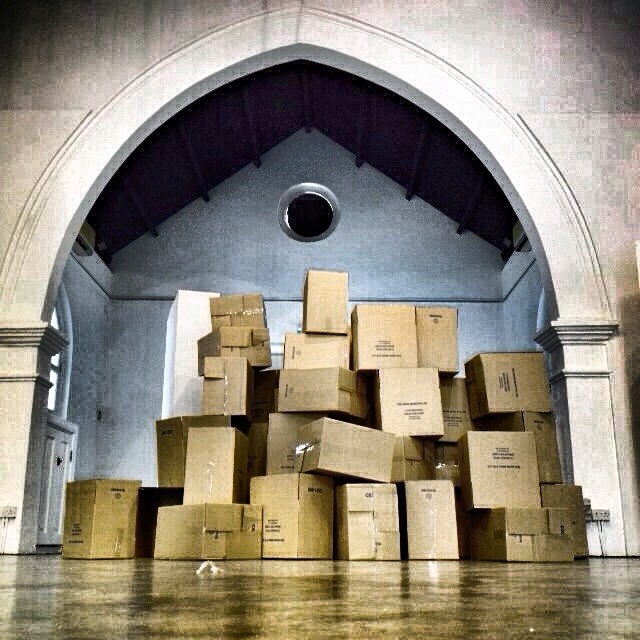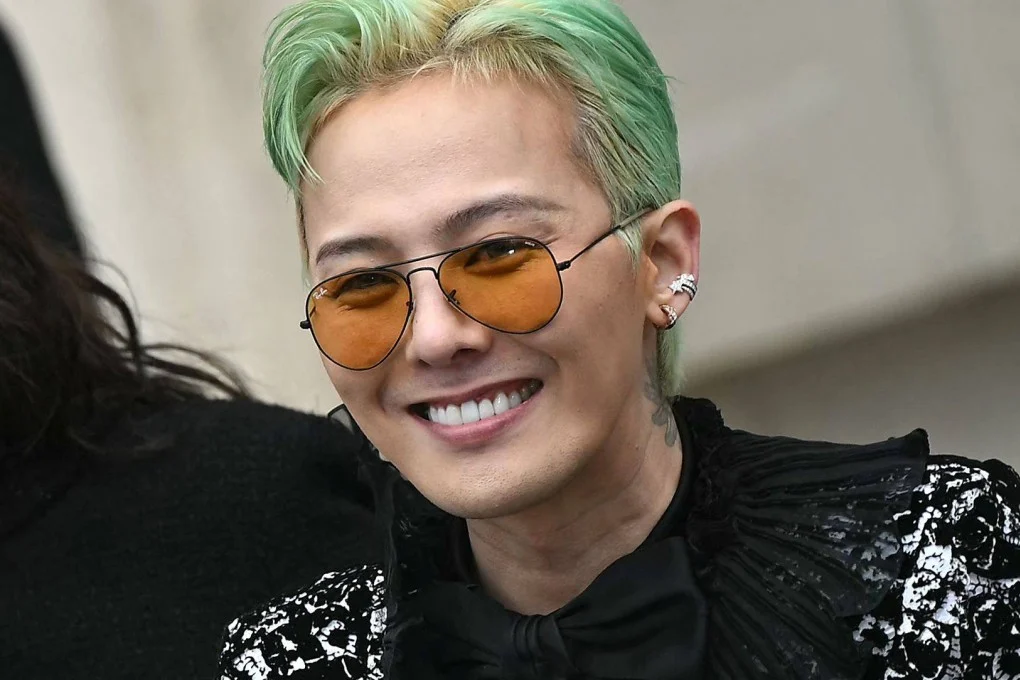Horror theatre is a tough genre to tackle, especially when embarking on one such play that has successfully become the second longest non-musical running play in the world.
The Woman In Black is a classic tale not just about the unseen, but the exposition between actors in the theatre version. It is a script that is laborious, idea-laden and heavy, requiring deft interpretation and a commitment to maintain the integrity of the continuous suspense.
Up-and-comer Ethan Chia (Equus) brilliantly challenges the audience by going one step further: he questions the role of the audience. So instead of a typical proscenium or black box production, he places the audience standing in the dark Sculpture Square Chapel Gallery as he engages in banter with Arthur Kipps, played by Riccardo Cartelli (Six Characters in Search of an Author) with the audience in the center of the discourse.
As the Actor (played by Ethan) tries to get Arthur to emote from the script retelling the story of the ghostly Eel Marsh House, Arthur hesitantly agrees to recount his past in a strange sense of foreboding. The Actor becomes young Arthur as they enact Arthur’s past, with Arthur playing the peripheral characters surrounding young Arthur. The story is a simple one: young Arthur leaves London to attend the funeral of one of his firm’s clients, Mrs Alice Drablow.
As young Arthur attends Mrs Drablow’s funeral, he spots a womanly figure which continues to pop up every now and then. Upon digging through papers from Mrs Drablow, he uncovers the secret of the woman in black that some have tried to keep a secret from him. What ensues is a harrowing process of paranoia, confusion and plenty of suspense.
The payoff for a story like The Woman In Black can be as easy as a few scares, but it takes a certain sense of commitment from the audience to be fully invested in the play and the play-in-play. Director Ethan Chia seems to have understood this and placed the audience out of their comfort zone from the onset.
After a primer from the director outside of the Sculpture Square Chapel Gallery, it feels like the audience is immediately entering a play unlike the typical. No seats, no stepping on props, no sources of light from phones and other gadgets. Upon entering the space, props are astrewn on the perimeter with the audience taking their natural spot in the centre.
The unnatural atmosphere makes the first scene a real challenge to stand through as two actors talk about the meaning of acting and emoting a story. Riveting stuff if you are a theatre geek or film buff, but not for the average theatregoer. The two actors weave among the audience, saying their lines inside the sea of eyes. But after the initial exasperation, the lull soon follows and patience creeps in. You understand the struggle of Arthur Kipps not wanting to relive the story but still facing the itch to tell it. You understand how the Actor urges Arthur to let go and place honesty in each line.
By the time the actual story begins, the audience is huddled in a corner as the Actor plays young Arthur, only lighted by a bedside lamp highlighting his side profile. The experimentation is masterful in its subtlety and emptiness: a divider acts as a door and a patch of grass in different forms, a switcheroo in lighting lets audiences know when they are in a house or outside it.
The primer in the Actor asking Arthur to use his imagination to illustrate the play with colour in language is the primer to the audience too. And soon, we believe that a long shadow is a graveyard, a bunch of stools is a horse carriage and crying sounds are enough to show us a baby without the need for a real one or a doll.

Ethan delivers in his role with the conviction needed of the Actor and the hesitation needed of young Arthur. His commanding tone belies his skinny frame and grabs the audience by the collar; all eyes are on him in every line.
Riccardo shows much growth as he transforms from a disillusioned, detached, emotionless Arthur to a storyteller wrapped in the manic of his own story. He shows much versatility in the various side roles he acts, be it in stature or a slight change of tone. He even delivers some comic humour in a few stereotypical village-folk roles. There is fire in his eyes, a fire that kept on burning.
With Ethan continuing to push for new frontiers (his new theatrical project is scheduled for an August release), we can only hope for a longer run this time. The Woman In Black could have failed spectacularly given the unorthodox treatment, but its immersive experience is a winner in a calendar where theatre is finally pushing the boundaries this year.
Two words: simply stellar.
Photos: Instagram/@twib2014
Keep track of their progress on the TWIB Tumblr page.









